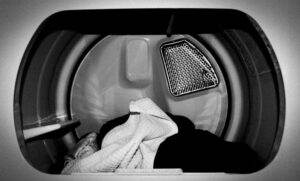Electric elements are crucial components in various appliances, providing the necessary heat or power to perform specific functions. From stovetops and ovens to water heaters and hair dryers, electric elements play a vital role in our daily lives. These elements are designed to withstand high temperatures and constant use, but like any other component, they can experience issues over time. It is important to understand the common problems that can arise with electric elements and how to properly maintain them for optimal performance.
Maintaining electric elements is essential to ensure that appliances continue to function efficiently. Over time, electric elements can become dirty or worn out, leading to decreased performance or even failure. Regular maintenance and timely repairs can help extend the life of these elements and prevent costly replacements. By understanding the common issues that can occur with electric elements and knowing how to identify and address them, you can keep your appliances running smoothly.
Key Takeaways
- Electric element excursions can cause issues with your appliances and lead to failure.
- Common issues with electric elements include corrosion, sediment buildup, and overheating.
- Signs of electric element failure include no hot water, strange noises, and leaks.
- Testing your electric element can be done with a multimeter and following safety precautions.
- Common causes of electric element problems include hard water, high voltage, and age.
Understanding the Common Issues with Electric Elements
There are several common issues that can arise with electric elements. One of the most common problems is a buildup of dirt or debris on the element’s surface. This can happen over time as food particles or other substances accumulate on the element. When this happens, the element may not be able to heat up properly, resulting in uneven cooking or slower heating times.
Another common issue is a worn-out or damaged element. Over time, the constant heating and cooling cycles can cause the element to deteriorate. This can lead to hot spots or even complete failure of the element. Additionally, electrical connections within the element can become loose or corroded, causing poor conductivity and reduced performance.
Identifying the Signs of Electric Element Failure
It is important to be able to identify the signs of electric element failure early on to prevent further damage. One of the most obvious signs is a lack of heat or power from the element. If you notice that your appliance is not heating up as quickly or as evenly as it used to, it may be a sign that the electric element is failing.
Another sign of electric element failure is visible damage or discoloration on the element’s surface. If you notice any cracks, breaks, or burn marks on the element, it is likely that it needs to be replaced. Additionally, if you smell any unusual odors or notice sparks or smoke coming from the element, it is important to stop using the appliance immediately and seek professional help.
How to Test Your Electric Element for Issues
Testing your electric element for issues can help you accurately diagnose the problem and determine whether it can be repaired or needs to be replaced. Here is a step-by-step guide on how to test your electric element:
1. Turn off the power: Before testing the electric element, make sure to turn off the power to the appliance and unplug it from the electrical outlet. This will ensure your safety during the testing process.
2. Inspect the element: Carefully examine the element for any visible damage or discoloration. Look for cracks, breaks, burn marks, or loose connections. If you notice any of these issues, it is likely that the element needs to be replaced.
3. Test for continuity: Using a multimeter set to the resistance or continuity setting, touch one probe to each end of the element. If the multimeter shows a reading of zero or very low resistance, it means that there is continuity and the element is functioning properly. If there is no reading or a high resistance reading, it indicates that there is a problem with the element.
4. Test for power supply: If the continuity test shows that there is no issue with the element, you can test for power supply. Turn on the appliance and use a voltage tester to check if there is power reaching the element. If there is no power, it may indicate a problem with the electrical connections or the control board.
Common Causes of Electric Element Problems
There are several common causes of electric element problems. One of the main causes is improper maintenance or neglect. If the element is not regularly cleaned or if it is exposed to excessive heat or moisture, it can become dirty or corroded, leading to decreased performance or failure.
Another common cause is power surges or electrical fluctuations. These can occur due to lightning strikes, faulty wiring, or power outages. Power surges can cause damage to the electrical components of the element, leading to failure.
Additionally, using the appliance beyond its intended capacity can put strain on the electric element and cause it to fail. For example, using a stovetop burner at a higher heat setting than recommended can cause the element to overheat and burn out.
Steps to Repairing Electric Element Issues

If you have identified an issue with your electric element and it can be repaired, here are the steps you can take to fix the problem:
1. Turn off the power: Before attempting any repairs, make sure to turn off the power to the appliance and unplug it from the electrical outlet. This will ensure your safety during the repair process.
2. Clean the element: If the issue is a buildup of dirt or debris on the element’s surface, you can clean it using a soft brush or cloth. Make sure to remove any loose particles and wipe away any residue.
3. Replace damaged parts: If there are any visible cracks, breaks, or burn marks on the element, it will need to be replaced. Contact the manufacturer or a qualified technician to obtain a replacement part and follow their instructions for installation.
4. Check electrical connections: If the issue is a loose or corroded electrical connection, carefully inspect the connections and tighten them if necessary. If there is corrosion, clean it using a wire brush or sandpaper and apply a conductive grease to prevent further corrosion.
Replacing Your Electric Element: A Guide
If your electric element cannot be repaired and needs to be replaced, here is a step-by-step guide on how to do it:
1. Turn off the power: Before replacing the electric element, make sure to turn off the power to the appliance and unplug it from the electrical outlet. This will ensure your safety during the replacement process.
2. Remove the old element: Depending on the appliance, you may need to remove a cover or panel to access the element. Carefully disconnect any electrical connections and remove any mounting screws or brackets holding the element in place. Gently pull out the old element from its housing.
3. Install the new element: Insert the new element into the housing, making sure it is properly aligned. Secure it in place using the mounting screws or brackets. Reconnect any electrical connections, making sure they are tight and secure.
4. Test the new element: After replacing the electric element, turn on the power to the appliance and test it to ensure that it is functioning properly. If there are any issues, double-check the connections and make sure they are properly installed.
Maintenance Tips to Prevent Electric Element Failure
Regular maintenance can help prevent electric element failure and extend their lifespan. Here are some maintenance tips to keep in mind:
1. Clean regularly: Clean your electric elements regularly to remove any dirt or debris that may accumulate on their surface. Use a soft brush or cloth to gently wipe away any residue.
2. Avoid excessive heat or moisture: Avoid exposing your electric elements to excessive heat or moisture, as this can cause damage or corrosion. Follow the manufacturer’s guidelines for proper usage and avoid using them beyond their intended capacity.
3. Check electrical connections: Periodically check the electrical connections of your electric elements to ensure they are tight and secure. If you notice any loose or corroded connections, tighten them or clean them as necessary.
4. Schedule professional maintenance: Consider scheduling regular maintenance with a qualified technician to inspect and clean your electric elements. They can identify any potential issues and address them before they become major problems.
Troubleshooting Electric Element Issues: FAQs
Here are answers to some frequently asked questions about electric element issues:
Q: Can I repair an electric element myself?
A: It depends on the issue and your level of expertise. Simple issues like cleaning or tightening electrical connections can be done by homeowners. However, more complex issues or replacing the element itself may require professional help.
Q: How often should I clean my electric elements?
A: It is recommended to clean your electric elements at least once a month or as needed. This will help prevent the buildup of dirt or debris and ensure optimal performance.
Q: Can power surges damage electric elements?
A: Yes, power surges can cause damage to the electrical components of electric elements. It is important to use surge protectors or voltage regulators to protect your appliances from power fluctuations.
Q: What should I do if I smell a burning odor coming from my electric element?
A: If you smell a burning odor coming from your electric element, immediately turn off the power to the appliance and unplug it from the electrical outlet. Contact a qualified technician for further assistance.
Professional Help for Electric Element Repairs and Replacements
While some electric element issues can be resolved by homeowners, there are times when it is best to seek professional help. If you are unsure about how to diagnose or repair an issue with your electric element, it is recommended to contact a qualified technician. They have the knowledge and experience to accurately diagnose the problem and provide the necessary repairs or replacements.
When choosing a professional for electric element repairs and replacements, it is important to consider their qualifications and experience. Look for technicians who are licensed and insured, as this ensures that they have met the necessary requirements to perform the job safely and effectively. Additionally, read reviews and ask for recommendations to ensure that you are choosing a reputable professional.
In conclusion, electric elements are essential components in various appliances, providing the necessary heat or power for optimal performance. Understanding the common issues that can arise with electric elements and knowing how to properly maintain and repair them is crucial for keeping your appliances running smoothly. By following the maintenance tips provided and seeking professional help when necessary, you can ensure the longevity and efficiency of your electric elements.
If you’re interested in learning more about identifying and repairing issues with electric elements, you might find this article from 911 Appliance helpful. They provide valuable insights and tips on troubleshooting common problems with electric elements and offer expert advice on how to fix them. Check out their article here to enhance your knowledge and ensure your appliances are in top-notch condition.
What are the common issues that can arise with electric elements and how can they be fixed?
When diagnosing electric element issues, common problems include faulty wiring, blown fuses, or damaged heating elements. To fix these issues, it is important to check the wiring for any signs of wear and tear, replace any blown fuses, and repair or replace damaged heating elements as needed.
Can the Same Troubleshooting Techniques be Used for Electric Stove and Other Electric Elements?
When facing issues with electric elements, it’s important to have the right resources. An electric stove troubleshooting guide can be a great starting point for identifying and resolving problems with not only your stove, but other electric appliances as well. Understanding common issues and their solutions can save time and frustration.
FAQs
What are electric element excursions?
Electric element excursions refer to issues that arise with the heating elements in electric appliances, such as ovens, stovetops, and water heaters.
What are some common issues with electric heating elements?
Common issues with electric heating elements include burnt out elements, faulty thermostats, and damaged wiring.
How can I identify issues with my electric heating elements?
You can identify issues with your electric heating elements by checking for signs such as uneven heating, slow heating, or no heating at all. You can also use a multimeter to test the continuity of the heating element.
Can I repair electric heating elements myself?
It is possible to repair electric heating elements yourself, but it is recommended to seek the help of a professional electrician or appliance repair technician to ensure proper and safe repairs.
What are some safety precautions to take when repairing electric heating elements?
When repairing electric heating elements, it is important to turn off the power supply to the appliance and to wear protective gear such as gloves and safety glasses. It is also important to follow the manufacturer’s instructions and to use the correct tools for the job.



